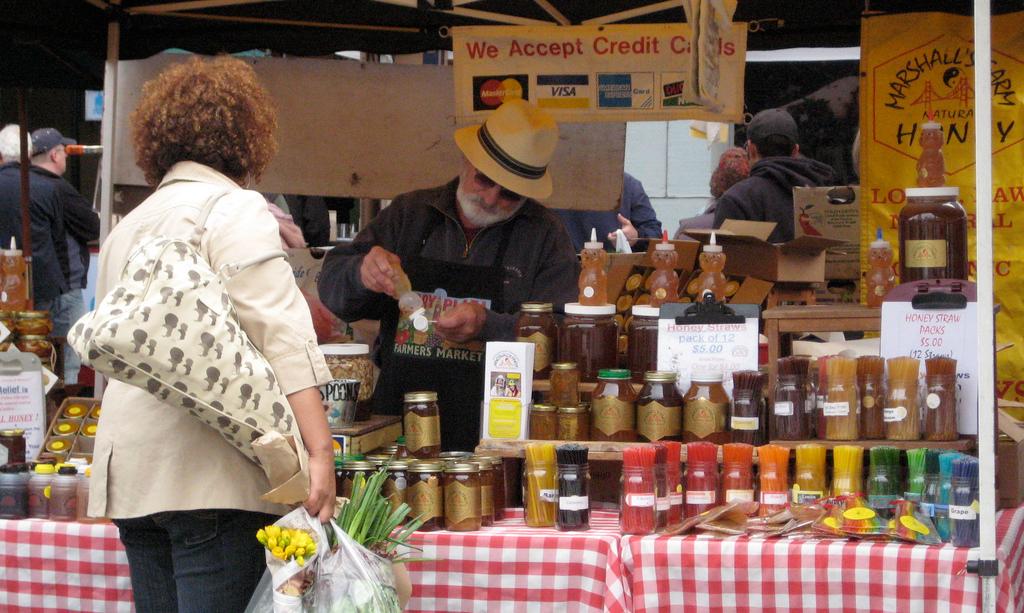When it comes to honey, in many stores you’re not getting what you think
Honey stall at the Farmer’s Market, Ferry Building in San Francisco in 2008. Pollen experts say the only way to make sure you’re getting actual honey is to buy from local farmers or at local stores. (Photo by Flickr user Phillie Casablanca, cc-b
When it comes to honey, sometimes investigators need to turn to an expert to get all of the facts.
That’s where Professor Vaughn Bryant of Texas A&M University comes in. He’s the nation’s premier melissopalynologist — someone who studies sweet pollens. Food and Safety News had heard that commercial honey manufacturers were taking all of the pollen out of their honey — and they needed Bryant to prove it for them.
“Once you take the pollen out, you don’t know two things: The first thing you do not know is where the honey was produced, and the second thing you do not know is exactly what flowers the bees were utilizing in order to produce the honey,” Bryant said.
That would make it easier for China to dump honey into the United States market. There’s supposed to be a large tariff on Chinese honey to discourage dumping, but they’ve tried to work around that by exporting the honey to other markets, which then send it onto the United States.
“The American Beekeeping Federation and the National Honey Board and others have consistently requested the federal government to enforce some kind of a truth in the labeling,” Bryant said. “But the federal government has been dragging their feet for years.”
Many other countries and the European Union already require that sort of labeling.
In the United States, the only requirements are that you not add water or sugar and that you remove any bee parts that are in the honey. Do that and it can be sold as honey. But by removing the pollen, perfectly legal in the United States, you’re also removing the only nutrient in the honey, Bryant explained.
“You take the pollen out, the only thing you’ve got is sugar,” he said. “The pollen does in fact contain amino acids, it contains starches, it also contains fats and vitamins and various kinds of minerals. A lot of people eat honey because of the nutritional value.”
What Bryant found was a lot of companies selling honey without pollen. CVS pharmacy, Walgreens, Rite-Aid and McDonalds sold no honey with the pollen still included. About 75 percent of the honey from Costco, Target, Sam’s Club and Walmart had no pollen as well.
“Buyer beware, because most of what you buy in the store, in terms of honey, is not what the label says,” Bryant said. “One of the things that we’ve discovered, not only can we not tell where the stuff comes from, but premium honey that’s being sold like buckwheat or orange blossom or sage or thyme honey – and people were willing to pay premium prices for this very exotic types of honey – we can’t confirm that any of that stuff is actually coming from those plants.”
The only way consumers can make sure they’re getting real honey with the maximum pollen benefits is to buy locally, Bryant said.
“Buy it from the beekeeper or buy local honey that is being sold in grocery stories and so forth, because all of this commercial stuff isn’t honey,” he said.
